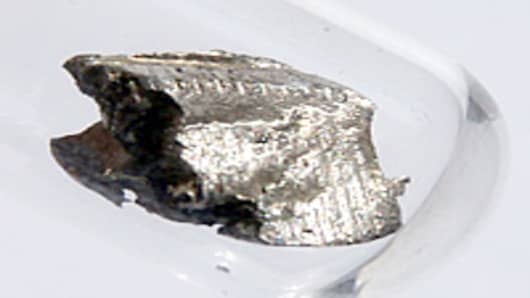Surging prices for rare earth metals and the possibility of hoarding have the cleantech sector on the offensive, spurring a new recycling effort to reclaim valuable elements from mountains of e-waste.
Japanese electronics firm Hitachi fired an early volley when it announced late last year that it would begin recovering two of these metals —neodymium and dysprosium — from magnets found in their own hard drives and air conditioners.
Those metals are two of a 17-member family known as rare earth metals, REM, that are critical — in small amounts — in the manufacture of hybrid and electric vehicles, solar and wind-power technologies, and personal electronics, such as Research In Motion's BlackBerry.
“Given that prices for some REMs have increased sevenfold since July, REM recycling is likely to emerge as a priority for large consumers going forward,” says Euan Sadden, analyst with cleantech research firm Pike Research.
Automaker Toyota , for example, recycles batteries for its Prius hybrid vehicle, and is now working with manufacturer Panasonic to break them down into higher value components, including plastics, base metals and precious metals like cobalt and REMs.
"Most, if not all of Japan’s large-scale electronics manufacturers are exploring new recycling technologies in-depth," says Sadden.
In Europe, REM recycling efforts have been “popping up around for some time,” says Eric Harris, director of government & international affairs for the Institute of Scrap Recycling Industries, ISRI, the recycling industry’s key trade group.
It’s understandable given the ascent of REM prices in the last year. China controls about 97 percent of known REM reserves and restricts their export.



